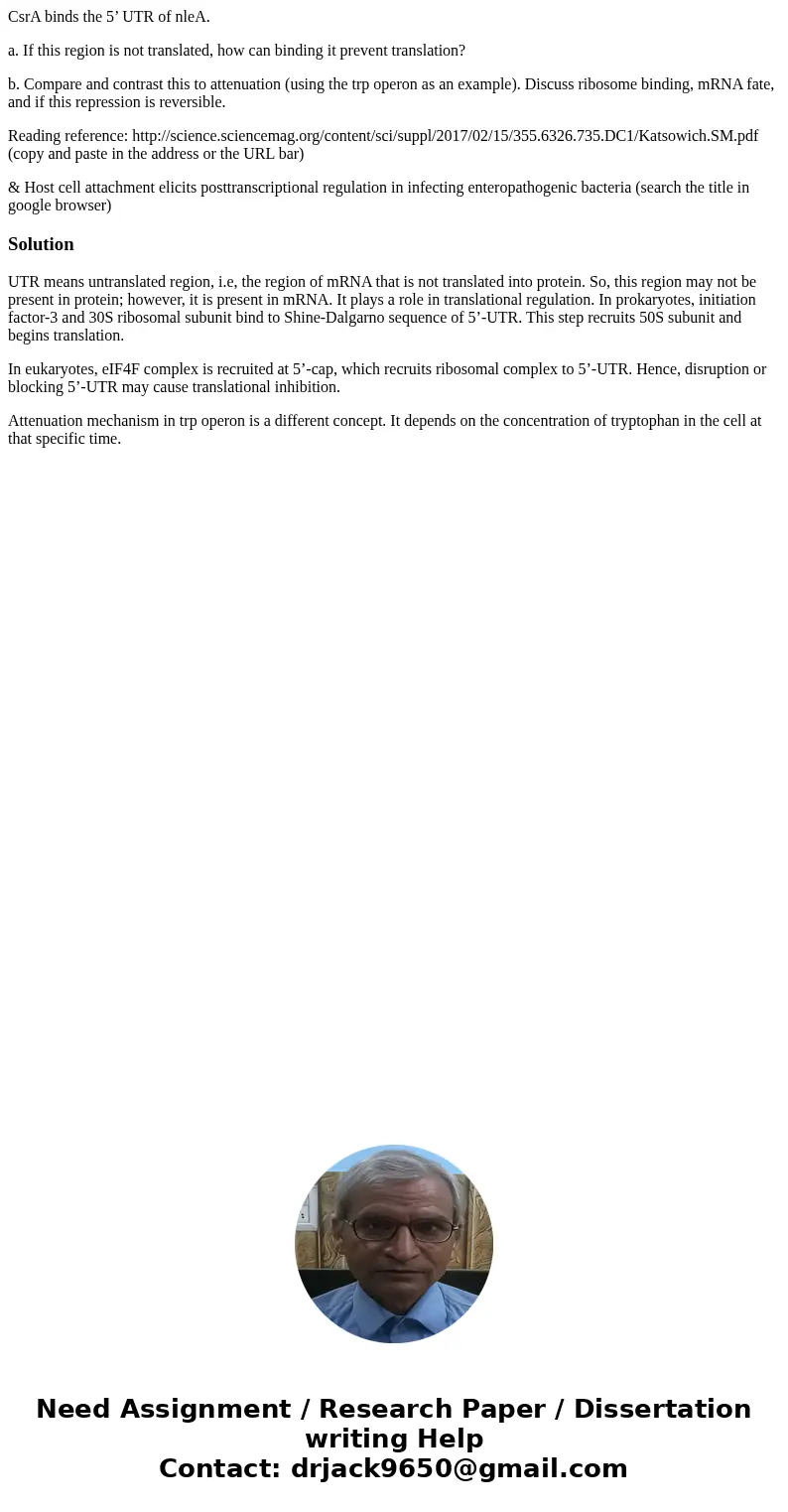CsrA binds the 5 UTR of nleA a If this region is not transla
CsrA binds the 5’ UTR of nleA.
a. If this region is not translated, how can binding it prevent translation?
b. Compare and contrast this to attenuation (using the trp operon as an example). Discuss ribosome binding, mRNA fate, and if this repression is reversible.
Reading reference: http://science.sciencemag.org/content/sci/suppl/2017/02/15/355.6326.735.DC1/Katsowich.SM.pdf (copy and paste in the address or the URL bar)
& Host cell attachment elicits posttranscriptional regulation in infecting enteropathogenic bacteria (search the title in google browser)
Solution
UTR means untranslated region, i.e, the region of mRNA that is not translated into protein. So, this region may not be present in protein; however, it is present in mRNA. It plays a role in translational regulation. In prokaryotes, initiation factor-3 and 30S ribosomal subunit bind to Shine-Dalgarno sequence of 5’-UTR. This step recruits 50S subunit and begins translation.
In eukaryotes, eIF4F complex is recruited at 5’-cap, which recruits ribosomal complex to 5’-UTR. Hence, disruption or blocking 5’-UTR may cause translational inhibition.
Attenuation mechanism in trp operon is a different concept. It depends on the concentration of tryptophan in the cell at that specific time.

 Homework Sourse
Homework Sourse